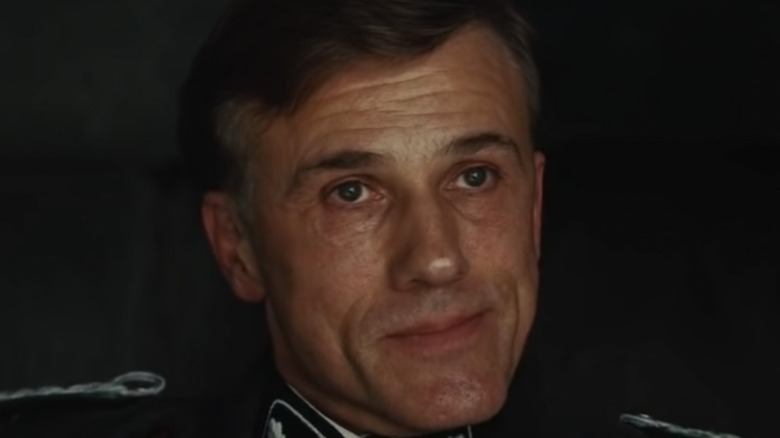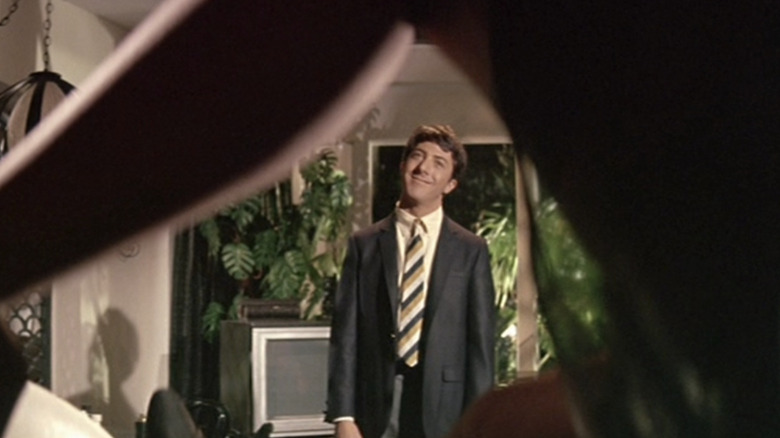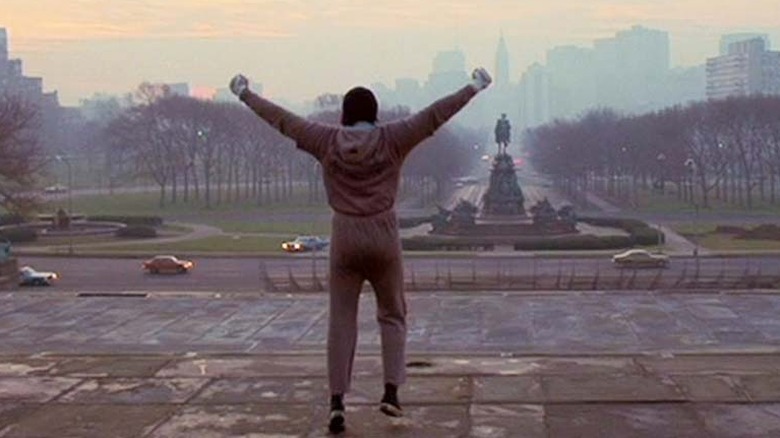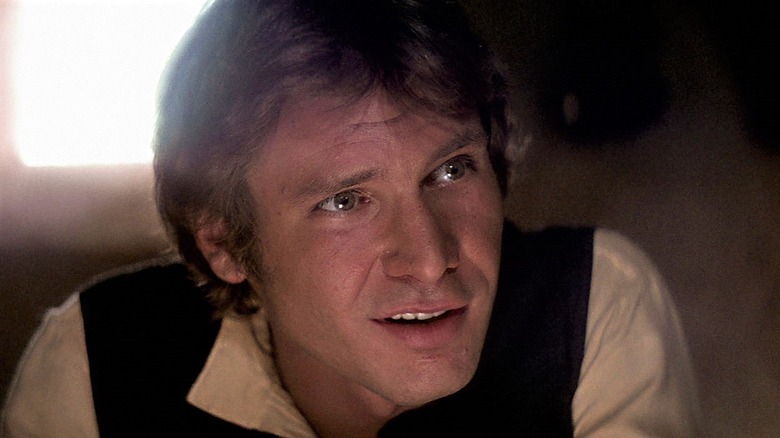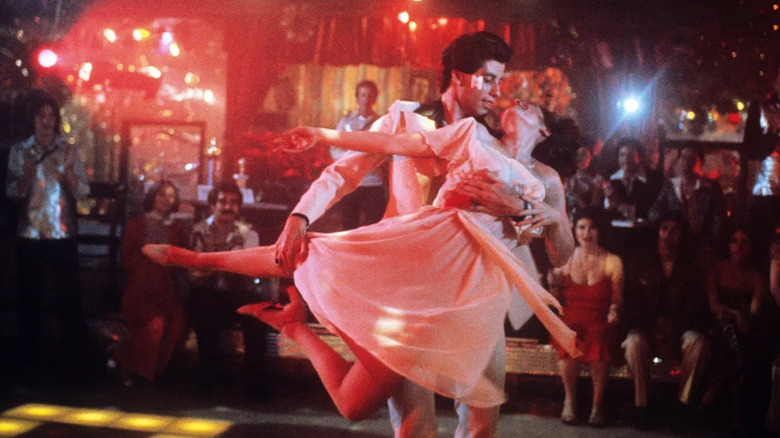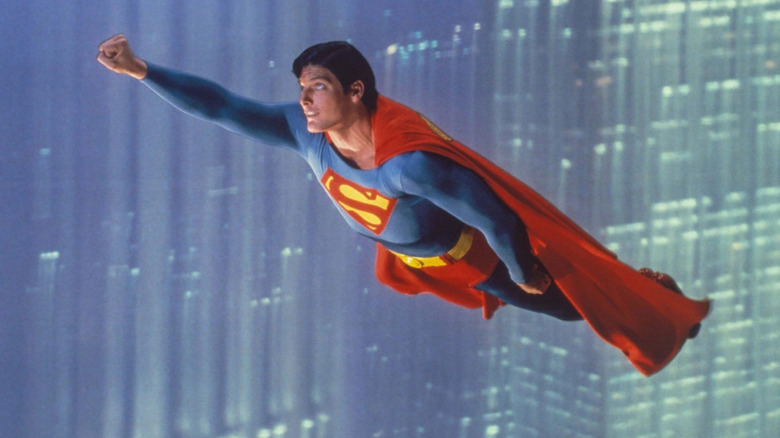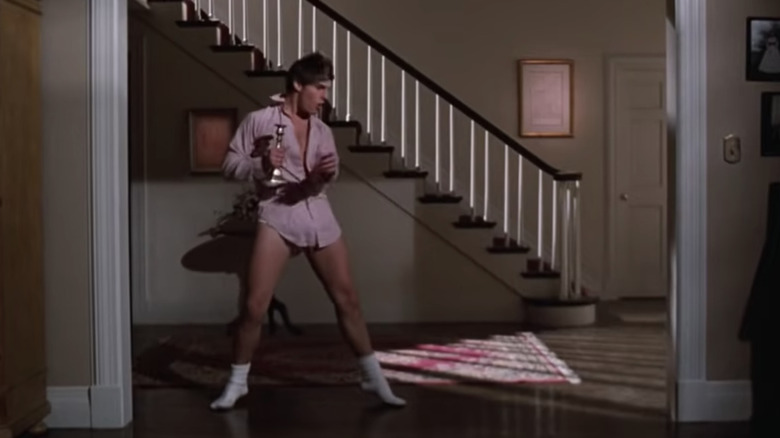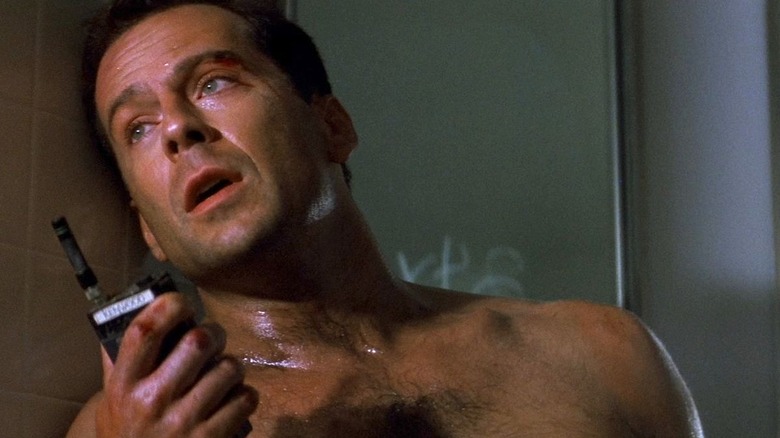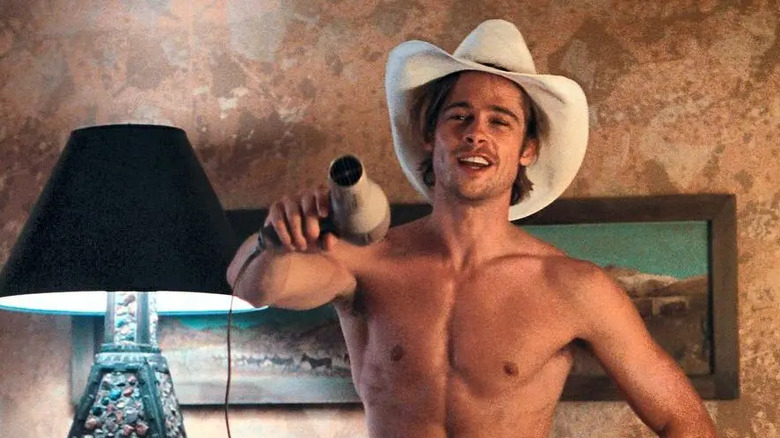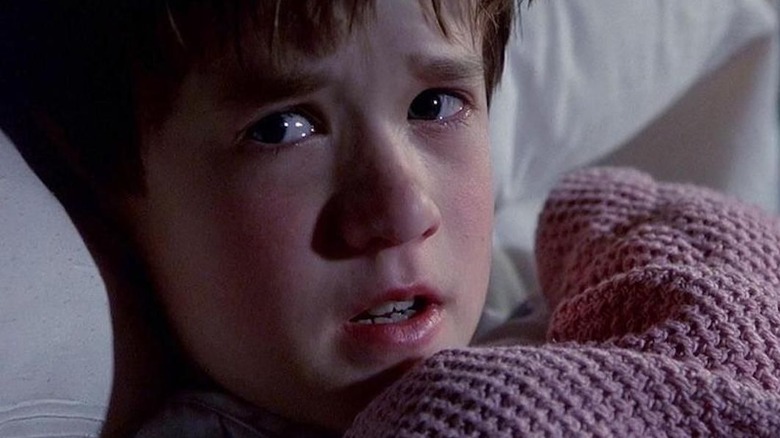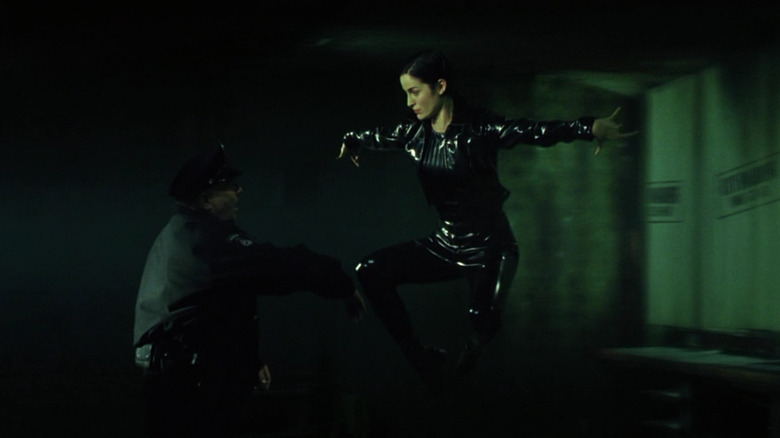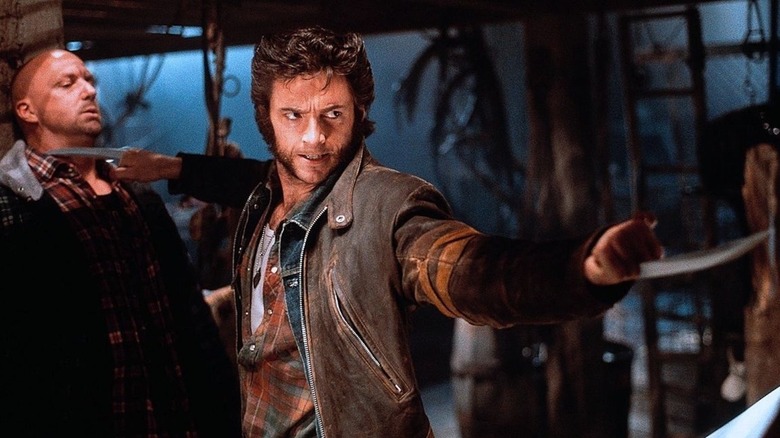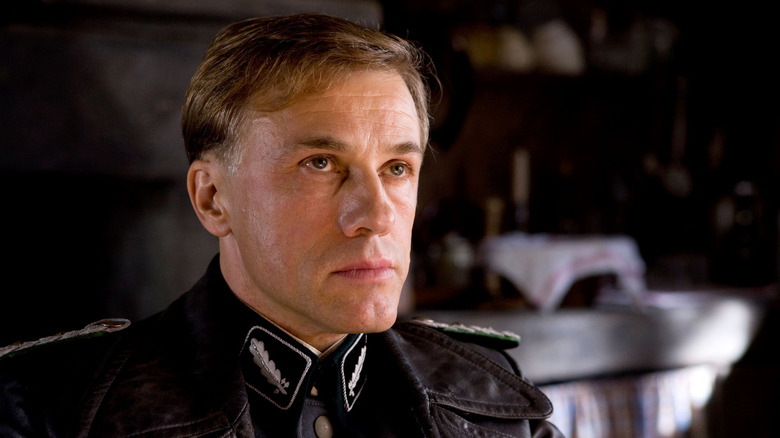Actors Whose Careers Were Born From One Great Scene
Every actor has to start somewhere, and most begin with bit or supporting parts that build up, before potentially transitioning to major or leading cinematic work. But sometimes, when a specific scene from a movie really connects with audiences, an actor's life can change overnight, as the strength of that single sequence catapults them into the public eye. Many of Hollywood's biggest actors got their start from a memorable scene, which elevated both the movie, as well as that actor's career to the global recognition that they have largely enjoyed ever since.
Here are the biggest actors whose careers began from one sequence in cinematic history, which often lead to widespread critical acclaim and box office success. These breakthrough performances either helped actors break into the movie business after years of television work or happened to be that one well-deserved debut that irrevocably brought them into the big time.
The Graduate makes Dustin Hoffman the poster boy of a generation
Mike Nichols' 1967 classic "The Graduate" captured the general malaise of middle class American youth in the 1960s. In this adaptation of Charles Webb's 1963 novel of the same name, Dustin Hoffman stars as recent graduate Benjamin Braddock, who feels directionless and isolated after returning home to Pasadena. As Benjamin settles into the ennui of his personal crossroads, he is seduced by Mrs. Robinson — an older, married friend of the family – which sets the film's story into motion.
Prior to starring in "The Graduate," Hoffman primarily worked in television and on stage. The critical and box office success of "The Graduate" made Hoffman one of the most acclaimed and recognizable actors of the year. Hoffman was nominated for Best Actor for his role as Benjamin, and went on to have a high-profile movie career. Mrs. Robinson's seduction of Benjamin would go on to become one of the more recognizable scenes from the movie, with the theatrical release poster prominently featuring an image from the sequence.
Rocky provides Sylvester Stallone with the ultimate underdog story
Rocky Balboa is cinema's most iconic boxer, the protagonist of a successful film franchise that spanned from 1976 to 2006, who also appeared in the acclaimed "Creed" spinoff series. And just as Rocky Balboa was given a million-to-one shot to rise from a South Philadelphia nobody to become a boxing superstar, the franchise also gave Sylvester Stallone his big break. As the sole screenwriter for the original film, one of Stallone's stipulations in selling the script to studios was that he would star as the movie's titular character (via EW).
Stallone's gamble paid off, with the young actor portraying the amateur boxer, who battles heavyweight champion Apollo Creed for the championship title (and glory). While "Rocky" is full of memorable scenes, perhaps the most unforgettable is the montage of the grueling training regimen that Rocky undergoes to prepare for the fight. This scene culminates with Rocky running through Philadelphia at dawn, triumphantly racing up the stairs at the Philadelphia Museum of Art as the soaring theme song "Gonna Fly Now" plays. It's an iconic moment that gets echoed throughout the franchise's history and has become an indelible part of both Stallone's career and pop culture.
Star Wars lets Harrison Ford define sci-fi cool
"Star Wars" completely turned the film industry on its head, spawning a multi-billion dollar franchise and countless genre imitators since the original film premiered in 1977. And while the core narrative of the movie focuses on the coming-of-age story of Luke Skywalker, the original trilogy's king of cool is the smuggler Han Solo. Portrayed by Harrison Ford, Solo made his memorable debut in a seedy cantina, where he negotiates his support from Luke, before blowing away a bounty hunter coming for him.
Prior to his turn in "Star Wars," Ford worked primarily as a carpenter, while appearing in small supporting roles in movies like "American Graffiti" and "Apocalypse Now" (via Vulture). Ford's introduction as Han Solo exuded his unique brand of self-assured cool, as he embodied this ultimate mercenary with a heart of gold ... who also has no qualms about shooting first. While Ford would follow this first portrayal of Han Solo with a long line of popular roles — including Indiana Jones — it was this appearance in "Star Wars" that first solidified his status as a minted movie star.
Saturday Night Fever gives John Travolta a showcase for his moves
By 1977, disco music ruled the nightlife in many major American locales like New York City and Los Angeles. So, it's perhaps only natural that the movie "Saturday Night Fever" would explore the cultural impact of disco fever and bring it to the mainstream. The movie stars John Travolta as Tony, a disillusioned Brooklyn teenager, who finds purpose and catharsis by dancing at discotheques on the weekends. At the time, Travolta was best known for a supporting role in the 1976 horror movie "Carrie," as well as his starring turn on the popular sitcom "Welcome Back, Kotter."
As Tony, Travolta channeled the frustrations of urban youth in the post-Vietnam War malaise into a beautiful dramatic performance that led to him being nominated for Best Actor at the Academy Awards in 1978. Travolta's most iconic moment in the film shows him confidently walk into a nightclub in a sharp white suit, and then embarking on a thrilling dance number on the light-up floor. The sequence made Travolta an international movie star and helped propel disco music to even further heights, thanks to the movie's massively popular Bee Gees-led soundtrack (via San Francisco Gate).
Superman: The Movie makes Christopher Reeve soar
There are very few actors who can completely embody a previously established role to make it totally their own, and there are fewer roles that come with as much fan expectation as Superman. Despite being a relative newcomer in Hollywood, actor Christopher Reeve earned widespread critical acclaim for his debut as the Man of Steel in 1978's "Superman: The Movie." And Reeve proved how much he was born to play the iconic superhero when the character flies through Metropolis, saving co-worker and friend Lois Lane from harm.
After training for years to hone his powers in the Fortress of Solitude, Clark Kent emerges and gets a job alongside Lois for Metropolis' news agency, The Daily Planet. When Lois' news helicopter nearly crashes departing from the skyscraper, Clark makes his grand entrance as Superman to save her from falling out of the aircraft. Reeve's natural charisma as the superhero not only charmed Lois and the people of Metropolis, but also audiences around the world to make him a bonafide movie star.
Risky Business lets Tom Cruise dance into America's heart
Three years before Tom Cruise first took flight in "Top Gun," the young actor solidified his ascent to Hollywood stardom in the 1983 teen comedy "Risky Business." Portraying ambitious Chicago high-schooler Joel Goodsen, Cruise danced his way into the public eye during a memorable sequence where he's home alone, having a time to the Bob Seger song "Old Time Rock and Roll." Sliding into frame in his shirt and underwear, Joel's impromptu song-and-dance moment heralded an even more debauched weekend to come.
Cruise's dance and portrayal of Joel enjoying his time alone captures the wish fulfillment aspect of this coming-of-age story — what fun can be had when your parents are out of town? — before veering into more risqué fare, as its title suggests. Its youthful and joyful exuberance clearly struck a cord in audiences, as "Old Time Rock and Roll" has been recognized by the American Film Institute as one of the top movie songs of all time, while the scene itself has been parodied numerous times. Cruise has since become one of the most bankable movie stars in Hollywood, and "Risky Business" gave his career the jumpstart it needed to ascend.
Die Hard gives Bruce Willis a chance to leave television
While Bruce Willis was one of the biggest action stars in the 1990s, he was primarily working as a television actor in the preceding decade. After some bit parts and supporting roles, Willis first got his big break by starring on the popular television series "Moonlighting," which premiered in 1985. However, Willis' star turn in 1988's action flick "Die Hard" was a career-defining role, which turned him into a full-on action hero and kicked open the door for him to transition to the big screen.
In "Die Hard," Willis stars as police officer John McClane, who is visiting his estranged wife at an office Christmas party in a Los Angeles skyscraper. Things go awry when terrorists take over the skyscraper to try to steal money from its vault, and McClane decides to jump in and save the day. While Willis has plenty of fan-favorite moments in the original "Die Hard," one of the most enduring is him proclaiming a vulgarized twist on Roy Rogers' catchphrase "Yippee Ki-Yay." The catchphrase would be echoed by Willis in a line of "Die Hard" sequels, while his performance as McClane catapulted him from television screens to cinemas worldwide.
Thelma & Louise showcases a young Brad Pitt's assets
1991's "Thelma & Louise" paired up Geena Davis and Susan Sarandon as the eponymous best friends, who travel together across the American Southwest to take a break from their oppressive day-to-day lives. However, this quick weekend getaway turns into an impromptu cross-country odyssey, as the women find themselves on the wrong side of the law after a man tries to assault one of them. The two friends go on the run, and they meet a number of people along the way, including a young Brad Pitt, who plays the charming amateur thief J.D.
"Thelma & Louise" capitalizes on Pitt's natural charisma by having J.D. seduce Thelma in a memorable scene, where he flaunts his bared muscular body, while wearing a cowboy hat. Not surprisingly, Pitt's performance immediately turned him into an international heartthrob, although the actor challenged that image by turning to more serious roles in the years that followed. However, for all the Academy Award-winning success Pitt has since enjoyed, it was this playful turn as a handsome thief that first put him in the spotlight.
The Sixth Sense gives Haley Joel Osment a chillingly quotable line
Filmmaker M. Night Shyamalan was catapulted into the Hollywood mainstream after the success of his 1999 movie "The Sixth Sense." The supernatural thriller follows a child psychologist, who works with a young boy with the ability to see ghosts, and as he tries to find out what's really going on with this child, discovers some dark truths about himself. Bruce Willis plays the psychologist Malcolm Crowe and the role of his patient Cole Sear is portrayed by Haley Joel Osment, with the latter's vulnerability fueling the movie's paranormal premise.
One of Osment's most memorable moments in the film is when he tells Malcolm his secret: that he sees dead people. The shock of this truth combined with Osment's whispered delivery has rendered the line — "I see dead people" — one of cinema's greatest quotes, according to AFI. While actors like Michael Cera auditioned for Cole, it's hard to imagine anyone but Osment in the role, as he deftly balances childhood innocence with the supernatural terror permeating throughout the movie, and is able to bring a surprising depth of emotion to this horror film. Since "The Sixth Sense," Osment has enjoyed a steady flow of roles in television, film, and video games, but his 1999 performance as the boy who sees dead people remains his most iconic to date.
The Matrix offers Carrie-Anne Moss the introduction she deserves
The Wachowskis' science fiction film "The Matrix" became an instant classic and cultural phenomenon when it was released in 1999, thanks to its head-trippy narrative and showcasing of just how far visual effects technology had come (and could go). To set the reality-bending stakes for the franchise, the film's opening sequence shows the freedom fighter Trinity battle her way through police, before escaping from relentless Agents in an epic rooftop chase. At the center of this action set piece is actor Carrie-Anne Moss, who quite literally kicks off the movie with a dazzling VFX martial arts strike.
Cornered by the police, Trinity suddenly rises into the air and delivers a crushing kick to an officer. Time appears to stop, as the camera spins around Trinity and her hapless target. The moment let audiences know what kind of advanced VFX they were in for, and it went on to be parodied and referenced by everything from "Shrek" to the most recent "Matrix" sequel "The Matrix Resurrections." For Moss, who had appeared on television and lower budget films before (she "had no career before," as she once told Entertainment Weekly), this first entrance as Trinity brought her significantly more prominent roles, and the chance to reprise this beloved sci fi character throughout "The Matrix" franchise.
X-Men unleashes Hugh Jackman in his star-making role
Of all the superheroes that make up Marvel's mutant team the X-Men, one that looms especially large over the franchise is the wily Wolverine. With an accelerated healing factor and virtually indestructible metal claws, the mutant superhero was brought to life on the big screen by Australian actor Hugh Jackman. Jackman appeared as Wolverine in a grand total of nine different "X-Men" films, which culminated with the character's end in the widely acclaimed 2017 movie "Logan."
Prior to his debut as Wolverine in 2000's "X-Men," Jackman wasn't particularly known to audiences outside of his native Australia. However, right from Wolverine's introduction in "X-Men," with the scrappy character fighting in a cage match and bar brawl, it was clear the actor was the right choice for the role. Wolverine is all about protection: He embodies the "lone wolf," who protects himself by not needing anyone else, but he soon learns to protect others — like Rogue – and Jackson perfectly captures these contrasting layers of Wolverine. "X-Men" made Jackson an international star and indelibly connected him to this Marvel mutant, but interestingly, he nearly missed out on the role entirely. Actor Dougray Scott was originally cast as Wolverine, but had to drop out of the movie due to scheduling issues, so Jackman was cast after production had already begin (via Variety).
Christoph Waltz terrifies audiences worldwide in Inglourious Basterds
While Austrian actor Christoph Waltz had worked steadily on stage and in television in Europe, he made a major splash with North American audiences with the 2009 film "Inglourious Basterds." In this WWII film written and directed by Quentin Tarantino, Waltz portrays the cunning SS officer Hans Landa, who is committed to mercilessly hunt down Jews hiding from the Nazis. Waltz's deliciously evil performance and undeniable charisma in such a twisted role are in full display right from the opening sequence of "Inglourious Basterds," where we see exactly how Landa has earned his fearsome reputation.
Playing out like a standalone vignette, the opening of "Inglourious Basterds" begins with Landa visiting the home of a French dairy farmer, whom Landa knows to be harboring a Jewish family hiding from Nazi occupiers. In this scene of chilling psychological warfare, Landa charms the farmer first, before suddenly turning icy and cruel, as he gets the man to reveal his secret. Landa and his men then massacre the sheltered family in this unforgettable and heartbreaking scene that both set the tone for "Inglourious Basterds" and turned Waltz into a bonafide star. Not surprisingly, Waltz's performance as Landa earned him the Academy Award for Best Supporting Actor in 2010.
